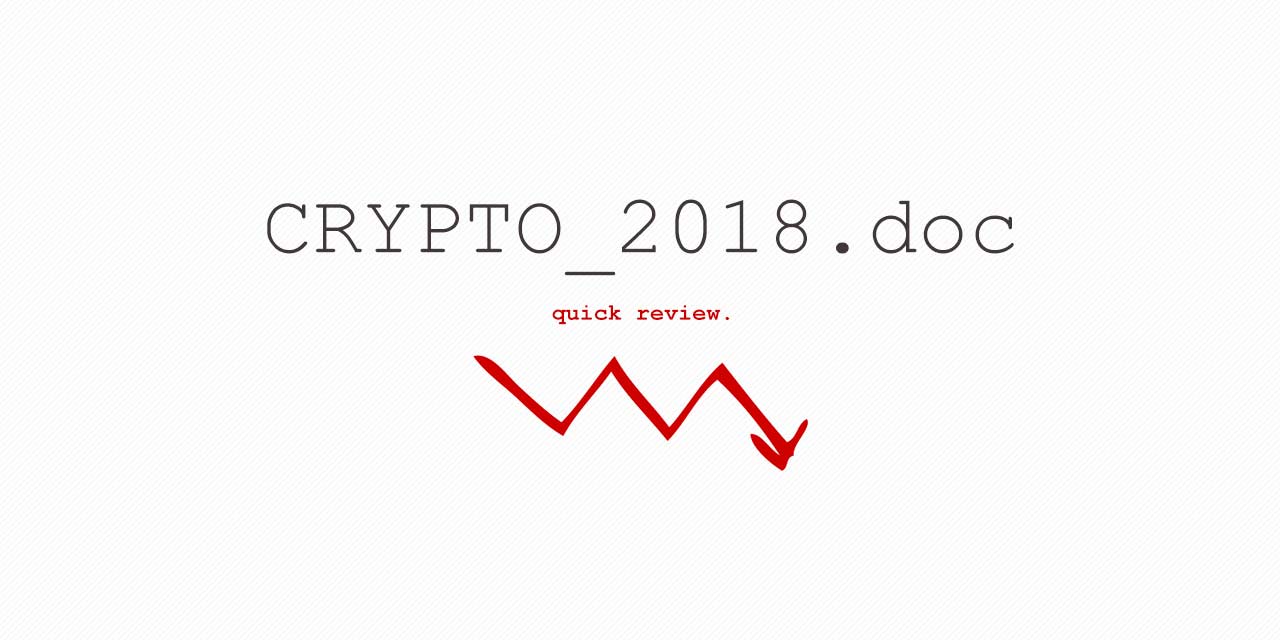For all those involved in digital currency, 2018 has certainly been a rollercoaster year. Now that it’s behind us, it’s time to reflect.
Table of Contents
Never-ending Bear Market
January of 2018 saw historic highs in cryptocurrency value, but the story after was not so rosy. A downward trend started that showed no signs of letting up, despite many measures to try and temper the slide.

Bitcoin was at $20,000 in December of 2017, but today is valued only around $4000, a whopping 80% drop from the high point. Many of the “copycat” currencies have experienced even more shocking losses, some reaching 95% decrease in value. The silver lining has been blockchain, whose development potential has never been in doubt.
Some of the more positive and exciting results of 2018:
- The steady growth of online capacity
- Ability to use Bitcoin on Square’s CashApp and Robinhood exchanges
- Ohio accepting Bitcoin as a tax payment method
- A series of successful programs like EOS and DAPP
In addition, data from LinkedIn and Glassdoor show blockchain and cryptocurrency-related jobs are the strongest growers among job categories and offer salaries well beyond the US media.
Regulation Ramp Up
2017’s bull market brought more attention to cryptocurrencies and blockchain as serious emerging industries. In 2018 this led to a flood of conflicting messages resulting in edicts against cryptocurrency.

Regulating bodies dialed up the pressure on blockchain-based projects, squashing many out of existence before they’d even really got started, such as the US SEC punitive fines against Airfox, Paragon and similar projects’ ICO programs. South Korea followed suit with bans on anonymous trades.
On the other hand, 2018, also saw lifts on ICO bans, taxes were levied on digital exchanges, and steps to legalize Bitcoin as a payment method. And although China in 2017 also issued a blanket ICO ban, 2018 saw official media continue to praise blockchain as an innovative and welcome part of the future technological development, with some jurisdictions even opening their minds again to Bitcoin, Ethereum and other cryptocurrencies.
The G20 leaders also have been looking to create a proper legal framework for operators to abide by, which is a crucial part of any future development. Only in this way can the sector identify and exclude its bad actors that make the sector currently very risky.
Hackers: A Lingering Specter
In theory, larger more centralized exchanges are much harder to attack, but that doesn’t stop a number of plucky anonymous hackers from trying their luck. Smaller market players like Verg, Monacoin, Vertcoin, Zencash, Litecoin Cash and even Bitcoin Gold have been targeted by hackers, accounting for some 51% of attacks. While many have been dealt with effectively, there will inevitably be more as the sector grows. Centralized systems continue to be targeted also, including Coincheck, Coinsecure, BitGrail, Coinrail, Bithub, and Bancor.
Facebook and Google – Banning and Un-banning

Early 2018 saw Facebook and Google instituting their own bans on digital currency advertising, for fear their users would be subject to fraud. By the end of the year, however, both platforms have softened on the issue and reallowed digital currencies back onto their multi-billion-user platforms, subject to scrutiny and approval of course.
BCH Civil War

There was bitter opposition in the previously about splitting Bitcoin into Bitcoin and Bitcoin cash (BCH), but it went ahead. Another year or so later, and the community is facing further division, as on November 15th, 2018, BCH now is divided into Bitcoin Cash ABC (aka BCH) and Bitcoin Cash SV (aka BSV). The split has created huge losses, as well as an overall market slide to new lows for the year.
The Rise of Stablecoin
As cryptocurrencies weakened in 2018, investors wanted to see ways they could minimize the risk of price volatility. Stablecoin has been a strong choice for them. In 2017 the big news was Stablecoin’s USD Tether (USDT) which, in theory at least, linked its price to the value of the dollar. Whether or not this tether has true legitimacy is an ongoing debate.
Enter the Institutions & Bitcoin ETF
Capital giant, Fidelity, announced in October its intention to offer transactions and hosting services beginning Q1 2019. Another market milestone is the setting up of the Bakkt exchange by New York’s Intercontinental Exchange (ICE). Partners include Starbucks, Microsoft, and other similar blue-chip giants. And although 2018 has seen 9 Bitcoin ETF defeats, an increasing number of people believe that the first Bitcoin ETF will be approved soon
In summary, it’s been a dramatic year in 2018. Highs and lows have robbed some projects of their viability, drowning them in the tides of the bear market. At the same time, however, there are some bright new projects that have caught the public’s attention. Ten years of Bitcoin and blockchain have been tumultuous, but we have every reason to expect great things in the next ten years.



















